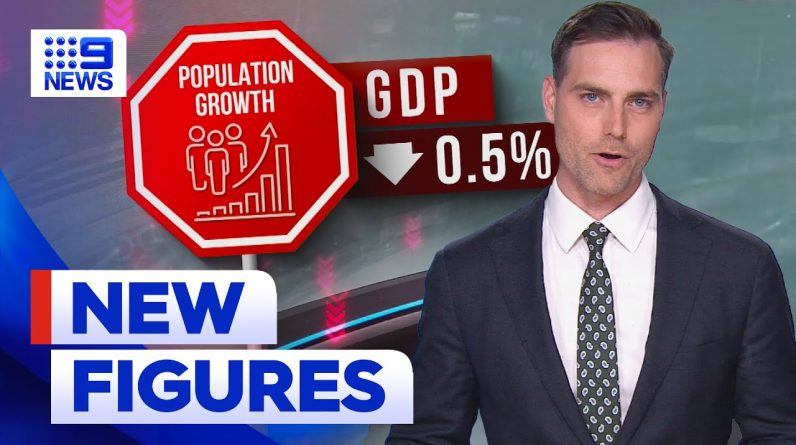Opinion is divided over who the real winners are following the Treasurer’s announcement.
BUDGET BONANZA: Who Gets the Cash
The latest budget announcement has sent ripples of excitement across various sectors, with a multitude of initiatives aimed at stimulating growth and alleviating financial burdens. From a significant injection into health and social services to a substantial boost for defence and manufacturing, the budget’s far-reaching implications are undeniable. But as the dust settles, a pressing question emerges: who will be the ultimate beneficiaries of this budget bonanza? As we dissect the allocation of funds, it becomes clear that the answer is not as straightforward as it seems.
Key Takeaways
- Older patients will receive $610 million in assistance to help them leave hospitals sooner.
- Students in teaching, nursing, and social work courses will get a $319.50 weekly payment for practical placements.
- Households and small businesses will receive a $300 and $325 rebate on their power bills, respectively.
- Carers will get increased flexibility to work, study, or volunteer, benefiting around 31,000 people.
- Around 4,700 single JobSeekers unable to work more than 14 hours a week will have their payment raised to a higher rate.
Health and Social Services Boost
The government has committed to investing $610 million to assist long-stay older patients in being discharged from hospital sooner, among other initiatives. Also, $190 million will be provided to extend and redesign the Transition Care Programme.
Furthermore, 24,100 more home care packages will be released next financial year. The government has also pledged to spend $330 billion on health over the next decade.
Other initiatives include freezing the cost of PBS-listed medications for one year for all Medicare card holders. Providing financial support to those leaving abusive relationships through the Leaving Violence Program is also part of the government’s plan.
Education and Economy Support
The government’s Education and Economy Support initiatives aim to alleviate the financial burden on students, with measures including a Commonwealth Prac Payment of $319.50 a week for students undertaking practical placements in teaching, nursing, midwifery, and social work courses. This means-tested payment will benefit around 68,000 higher education students and over 5,000 VET students from July next year.
Plus, the government is changing how HELP debts, VET student loans, and Australian Apprenticeship Support Loans accrue interest, reducing the debt burden on students. This measure is expected to cost the federal government around $3 billion in foregone revenue. These initiatives aim to solve the affordability gap for students required to undertake practical placements as part of their study.
Defence and Manufacturing Growth
Boosting Australia’s defence capabilities, the federal government has pledged an extra $5.7 billion over the next four years, with a projected additional $50.3 billion to be spent on defence in the decade to come.
This significant investment will enhance the nation’s security and protect its interests. In addition, the government will provide production tax incentives for critical minerals and hydrogen from 2027, promoting the growth of key industries.
Furthermore, $1.4 billion will be allocated over the next decade to support the manufacturing of clean energy technologies. Half a billion dollars will also be given to Geoscience Australia to map Australia and identify potential new critical mineral sites, further bolstering the nation’s industrial capabilities.
Cost of Living Relief Measures
To alleviate the financial pressures faced by many Australians, the government has introduced a range of cost of living relief measures. Every household will receive a $300 rebate on their power bills, while eligible small businesses will receive a $325 rebate.
The cost of PBS-listed medications will be frozen for one year for everyone with a Medicare card, and prices will be frozen for five years for concession card holders and pensioners. And, the government will continue to freeze the deeming rates for another year, benefiting 876,000 income support recipients. These measures aim to provide much-needed financial relief to Australians struggling with the rising cost of living.
Housing and Infrastructure Spending
By investing $1 billion in the National Housing Infrastructure Facility, the government aims to address the pressing need for crisis and transitional accommodation. Another $1 billion will be allocated to states and territories to support the development of new homes by funding essential infrastructure such as roads, sewers, energy, and water connections.
This significant investment is expected to stimulate the construction of new dwellings, alleviating the housing shortage and providing more Australians with a place to call home. Furthermore, the increased funding for infrastructure will also create jobs, boost economic growth, and enhance the overall quality of life for Australians.
Renewable Energy Investments
A substantial $3.2 billion investment over the next decade will accelerate Australia’s transition to renewable energy through the government’s flagship Future Made in Australia initiative. About half of this amount will be allocated to a new innovation fund, supporting the commercialization and rollout of new renewable technologies.
Additionally, $8 billion will be invested over the next decade to support renewable hydrogen production, including a Hydrogen Production Tax incentive. Further, roughly $100 million will be spent over the next four years to expedite approval processes for renewable projects. This significant investment is a crucial step towards a cleaner, more sustainable energy future for Australia.
Technology and Innovation Funding
Beyond renewable energy investments, the government is committing significant funds to drive technological advancements and innovative projects, allocating substantial resources to support the development of cutting-edge technologies.
A notable $3.2 billion will be spent over the next decade under the government’s flagship Future Made in Australia initiative to accelerate investment in renewable hydrogen and solar and battery supply chains.
About half of that will be paid through a new innovation fund to support the commercialisation and rollout of new renewable technologies.
Additionally, $8 billion will be invested over the next decade to support renewable hydrogen production, including a Hydrogen Production Tax incentive.
Sports and Community Upgrades
The government’s investment in sports infrastructure gets a significant boost, with nearly a quarter of a billion dollars allocated to upgrade the Australian Institute of Sport ahead of the 2032 Brisbane Olympics.
This investment is expected to enhance the country’s sporting capabilities and provide a world-class training facility for athletes. The upgrade will not only benefit elite athletes but also provide opportunities for community engagement and development.
Furthermore, the government’s commitment to sports infrastructure will have a positive impact on local communities, promoting healthy lifestyles and social cohesion. This investment is a crucial step towards building a stronger, healthier, and more connected Australia.
Online Safety and Security
Online safety concerns are being addressed through a trial age verification scheme for children, backed by a $6.5 million investment, to create a safer online environment.
This initiative aims to protect minors from online threats and ensure a secure digital space. The pilot program will test age verification methods to prevent underage access to inappropriate content and reduce online risks.
By investing in this trial, the government is taking a crucial step towards safeguarding the online experiences of Australian children. This move is expected to have a positive impact on the digital lives of young Australians, providing them with a safer and more secure online environment.
Mental Health and Wellbeing
As the government prioritizes a safer digital environment for children, it is also addressing the mental wellbeing of Australians through a national digital service, which will provide free support to those experiencing mental health distress without the need for a referral.
This initiative is backed by a significant investment of $588.5 million over eight years. Also, free mental health support will be delivered through a network of 61 Medicare mental health centers.
This comprehensive approach aims to provide accessible and timely support to those in need, ultimately promoting a healthier and more resilient community.
Family and Carer Support
Around 31,000 carers will benefit from increased flexibility to undertake work, study, or volunteer from March next year, as the government aims to provide greater support for those caring for loved ones. This move is part of a broader commitment to supporting families and carers.
The government will also spend close to $1 billion to make the Leaving Violence Program permanent, offering financial support and referrals to social services and safety planning for those fleeing abusive relationships. Additionally, superannuation will be paid on top of Commonwealth-funded paid parental leave from July next year, at a cost of $1.1 billion over four years. These initiatives demonstrate the government’s commitment to supporting vulnerable Australians and those who care for them.
Education and Training Incentives
By introducing the Commonwealth Prac Payment, the government aims to alleviate the financial burden on approximately 68,000 higher education students and over 5,000 VET students undertaking practical placement for teaching, nursing, midwifery, and social work courses from July next year.
This means-tested payment of $319.50 a week will be in addition to any other income support students are already receiving. The payment aims to solve a huge affordability gap for students required to do placement as part of their study.
Furthermore, changes to how student debts accrue interest will benefit those with HELP debts, VET student loans, and Australian Apprenticeship Support Loans, with debts growing at the rate of the consumer price index or wage price index, whichever is lower.
JobSeeker and Student Benefits
The budget’s changes to JobSeeker and student benefits aim to address the financial struggles of vulnerable Australians. Around 4,700 single JobSeekers who are unable to work more than 14 hours a week will have their payment raised to the higher payment rate.
And also, students undertaking practical placement for teaching, nursing, midwifery, and social work courses will be paid $319.50 a week for placement. This payment will benefit about 68,000 higher education students and more than 5,000 VET students from July next year. These changes aim to alleviate financial burdens and provide necessary support to those who need it most.
Small Business and Economy Boost
A new fee will give travellers access to fast-tracked Australian passport applications from July 1, anticipating $27.4 million in revenue over five years. This initiative is part of a broader effort to boost the economy and support small businesses. The government is committed to stimulating economic growth, and this fee is expected to contribute to that goal.
Additionally, eligible small businesses will receive a $325 rebate, providing relief and supporting their operations. These measures demonstrate the government’s commitment to fostering a strong economy and supporting the business sector. By providing incentives and reducing burdens, the government aims to create an environment conducive to growth and innovation.
Infrastructure and Road Funding
To support the country’s growing population and urbanization demands, significant infrastructure investments will be made. The government has allocated funding to address the nation’s infrastructure needs, including a notable investment of $1 billion towards crisis and transitional accommodation.
Another $1 billion will be provided to states and territories to support the development of new homes by funding roads, sewers, energy, and water connections. This strategic investment aims to alleviate the pressure on urban infrastructure, enhance connecti
Albion News is a great place to find informative, up-to-date news articles. We provide a wide range of unique articles that offer an interesting perspective on current events from around the world and from various different sources. You can easily search for the topics that matter most to you and explore in-depth pieces that provide insight into the issues and important debates occurring today. Albion News helps you stay informed with carefully researched and credible stories!







